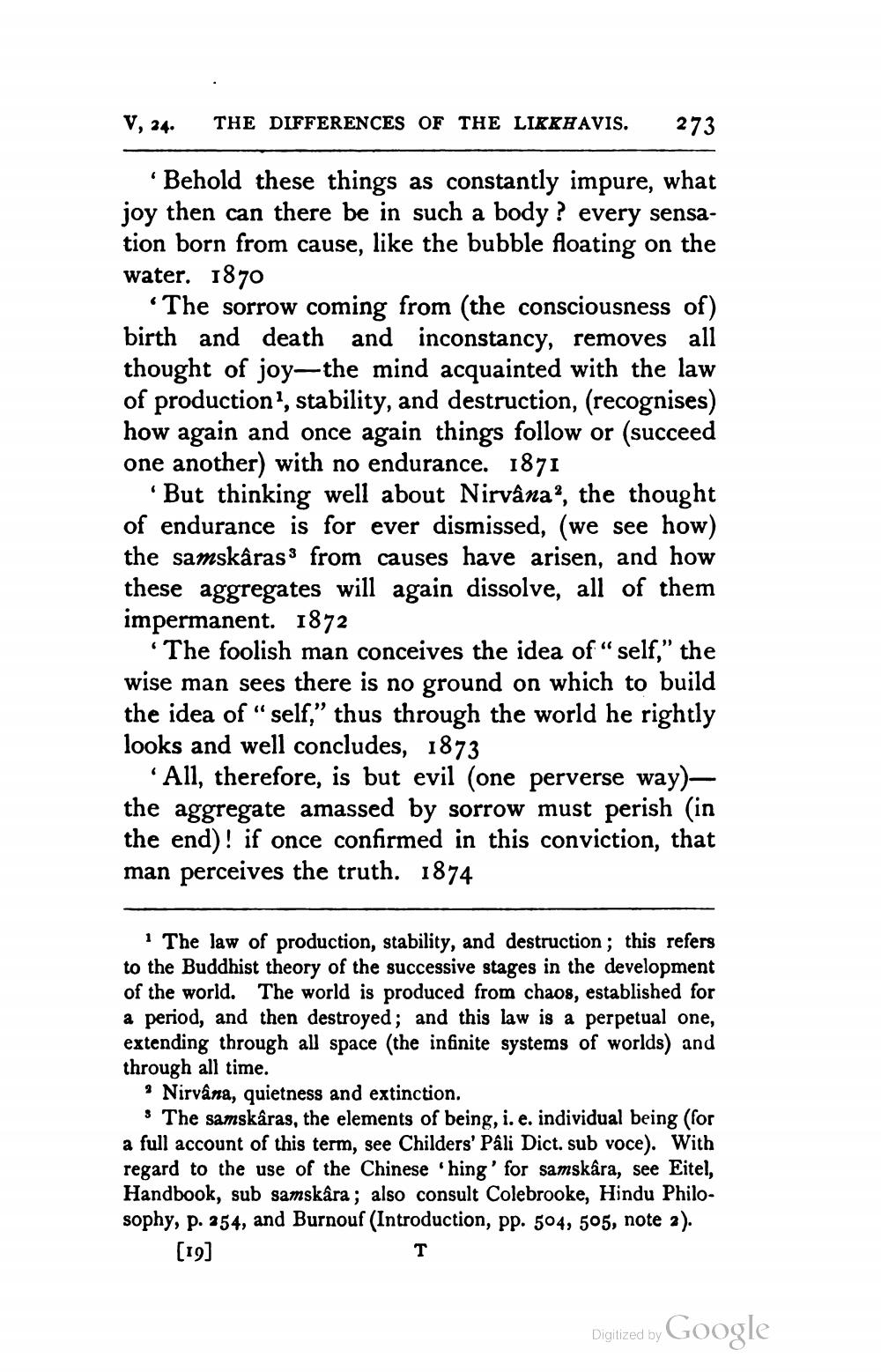________________
V, 24.
THE DIFFERENCES OF THE LIKKHAVIS.
273
Behold these things as constantly impure, what joy then can there be in such a body ? every sensation born from cause, like the bubble floating on the water. 1870
'The sorrow coming from (the consciousness of) birth and death and inconstancy, removes all thought of joy—the mind acquainted with the law of production', stability, and destruction, (recognises) how again and once again things follow or (succeed one another) with no endurance. 1871
'But thinking well about Nirvana?, the thought of endurance is for ever dismissed, (we see how) the samskârass from causes have arisen, and how these aggregates will again dissolve, all of them impermanent. 1872
The foolish man conceives the idea of “self,” the wise man sees there is no ground on which to build the idea of “self,” thus through the world he rightly looks and well concludes, 1873
All, therefore, is but evil (one perverse way)— the aggregate amassed by sorrow must perish (in the end)! if once confirmed in this conviction, that man perceives the truth. 1874
· The law of production, stability, and destruction; this refers to the Buddhist theory of the successive stages in the development of the world. The world is produced from chaos, established for a period, and then destroyed; and this law is a perpetual one, extending through all space (the infinite systems of worlds) and through all time.
Nirvana, quietness and extinction.
The samskâras, the elements of being, i.e. individual being (for a full account of this term, see Childers' Pâli Dict. sub voce). With regard to the use of the Chinese hing' for samskara, see Eitel, Handbook, sub samskara ; also consult Colebrooke, Hindu Philosophy, p. 254, and Burnouf (Introduction, pp. 504, 505, note 2).
[19]
Digitized by Google




